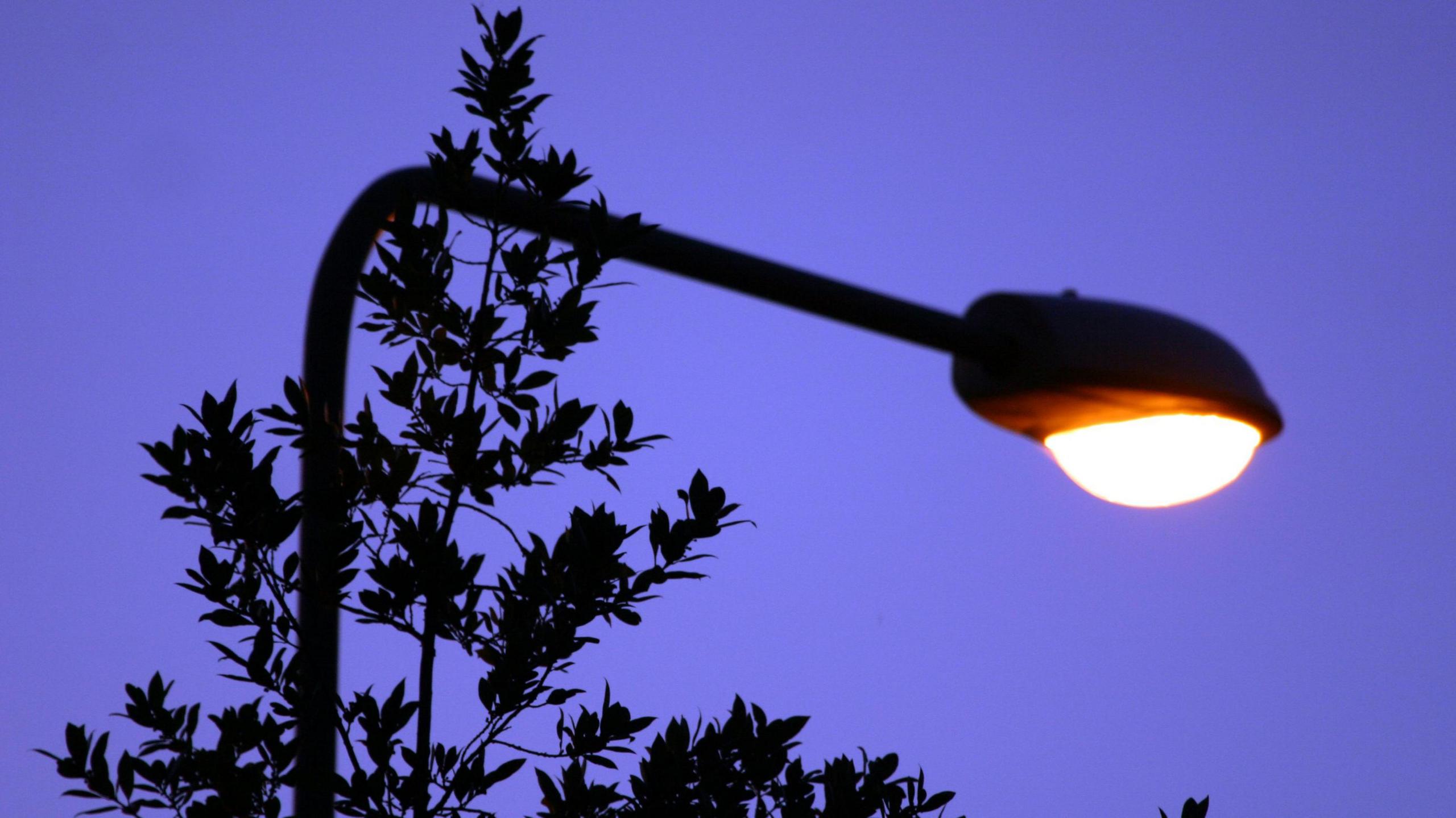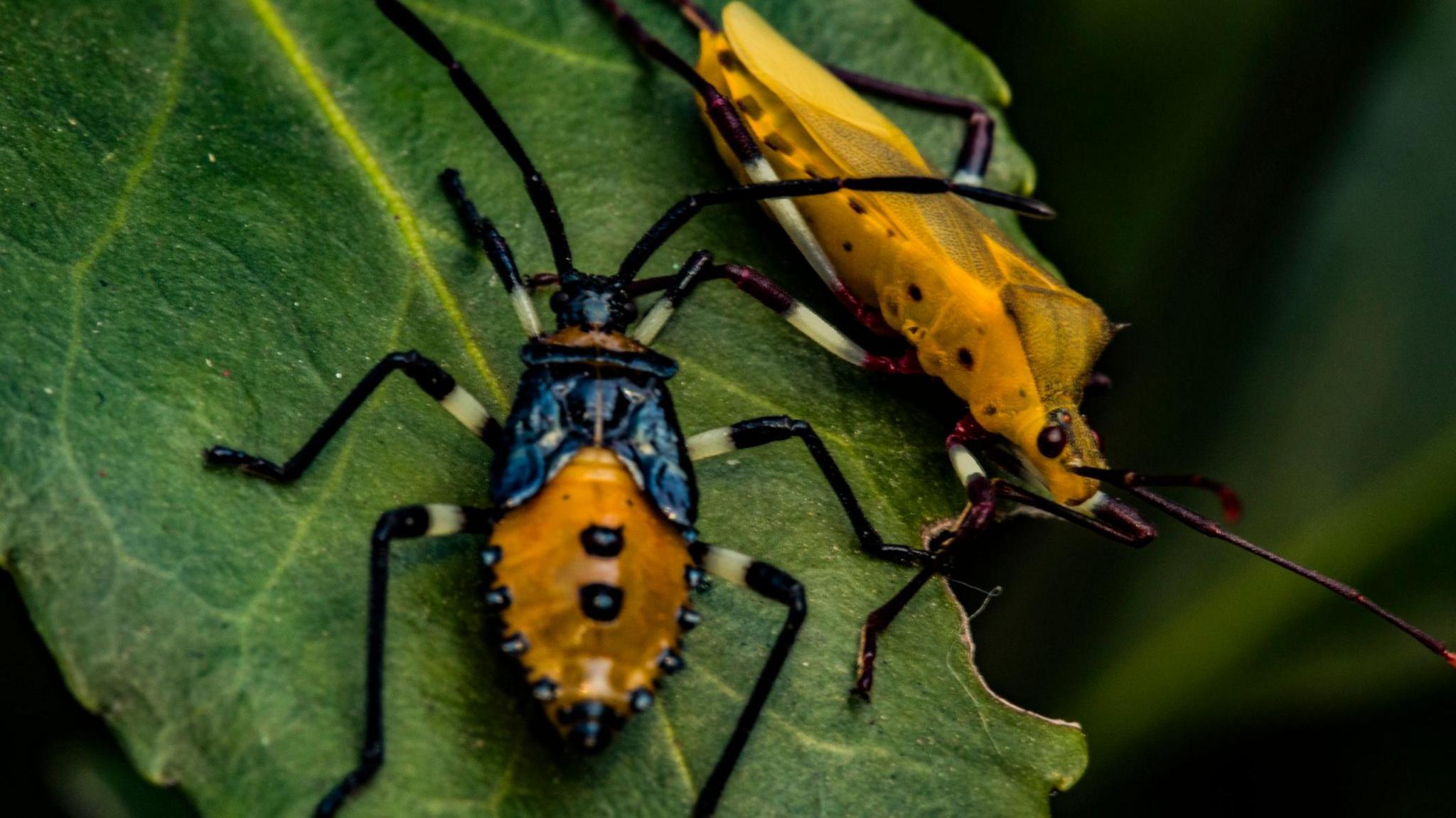Street lights can make leaves too tough for insects, says study

- Published
In many cities street lights are lit up all night, but a new study says that this could affect some insects.
Scientists from Beijing in China say trees lit by street lights can make leaves tougher, and therefore harder for insects to eat.
Dr Shuang Zhang of the Chinese Academy of Sciences decided to look at the effect of street lights on trees after noticing that two kinds of trees had less insect damage compared to other trees in the city.
The researchers collected almost 5,500 leaves from 180 Japanese Pagoda and green ash trees from 30 sites around Beijing.
They measured the amount of light each area was lit up by and also the toughness of the leaves.
What is Rewilding?
- Published21 May 2021
Check out the wonderful world of insects
- Published6 June 2024
Bugs: Why are they are so important to our environment?
- Published21 July 2019
They found higher levels of exposure to artificial light resulted in tougher leaves.
Artificial is a word to describe something that does not happen naturally. For example, it might be human made.
The tougher the leaf, the less insect damage there was.
Areas with the brightest light had leaves which were extremely tough and had no insect damage, according to the scientists who conducted the study.
Another theory why there is less leaf damage on the leaves more exposed to city lights is because more light could make insects more visible to predators.

The leaves from trees in areas of brighter artificial light had less damage from insects, the study found
Although no insect damage on leaves sounds like a good thing, the research team says it impacts ecosystems and biodiversity.
An ecosystem is a community of animals, plants, micro-organisms, non-living things and their shared environment interacting together.
Fewer leaves could lead to fewer plant-eating insects, which could lead to fewer birds that eat insects.
Bitesize: How do ecosystems work?
This isn't the first study to show how light pollution can affect insects.
A study from the UK Centre for Ecology & Hydrology published in 2021 found that artificial lights disrupted the behaviour of moths and caterpillars which led to a decrease in their numbers.
